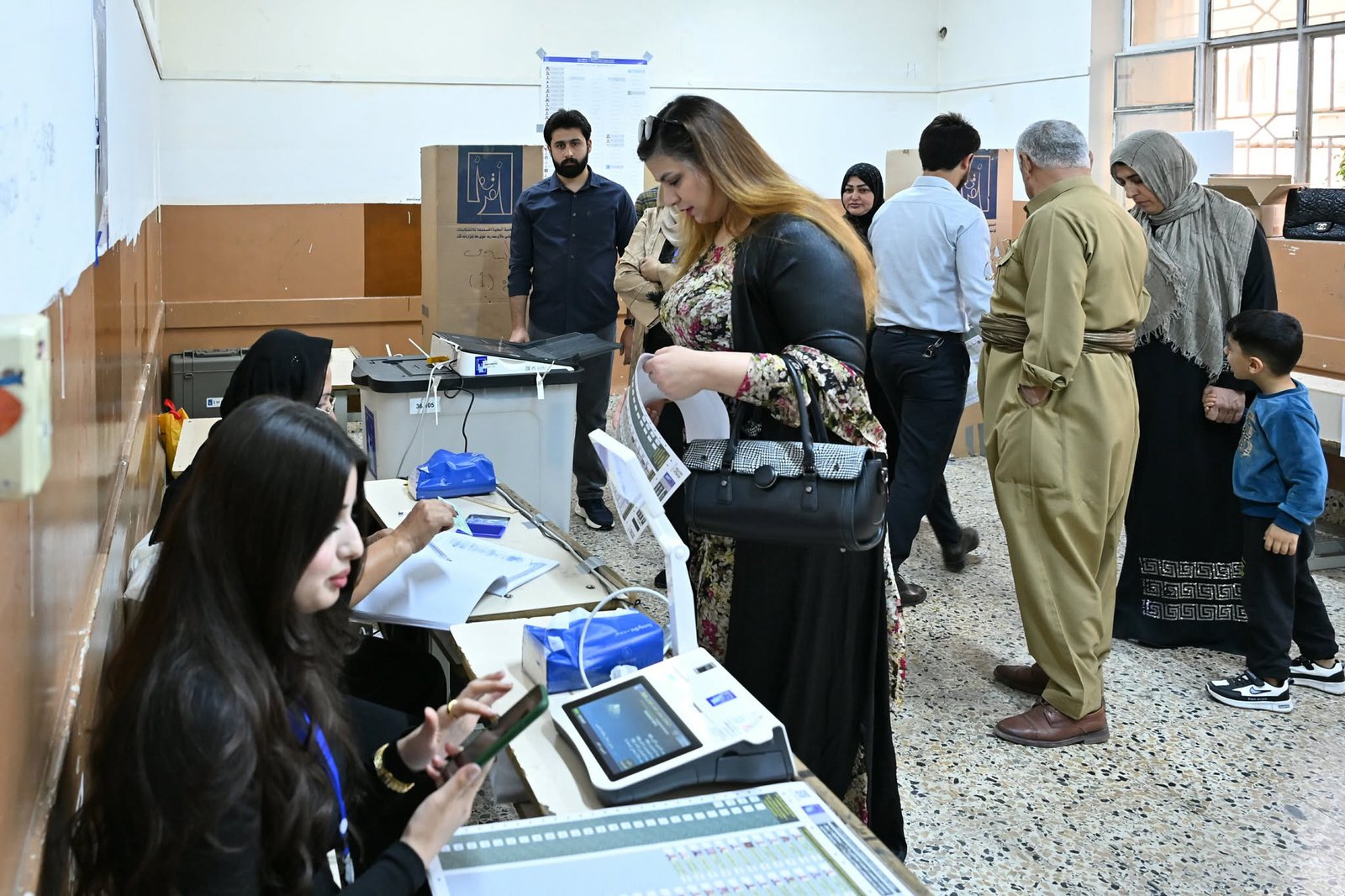Iraq’s Election Reshuffles Shia Power Dynamics While Sectarian Balance Holds

Preliminary results show Shia parties collectively securing approximately 185 of 329 parliamentary seats, broadly consistent with their previous representation. Kurdish parties won around 60 seats, while Sunni parties captured 70-72 seats, maintaining the overall inter-sectarian equilibrium.
Context: Shia factions had feared dramatically reduced turnout in Shia-majority areas—particularly Baghdad’s 69-seat constituency—following firebrand cleric Muqtada al-Sadr’s boycott call to his followers. However, the official 56% turnout exceeded expectations, undercutting al-Sadr’s aim of delegitimising the vote through a mass boycott.
Analysis: Within the Shia bloc, Prime Minister Mohammed Shia al-Sudani’s list dominated with over 50 seats, potentially reaching 70. His main rival, former PM Nouri al-Maliki’s State of Law coalition, placed second, while Qais al-Khazali’s Sadiqqun outperformed Hadi al-Amiri’s Badr Organization for third place. A notable newcomer is the Asas coalition led by Muhsin Mandalawi, a pro-Iran Fayli Kurdish businessman who signals new dynamics within Shia politics.
Among Sunni parties, Muhammad al-Halbousi’s Taqaddum decisively outpaced both Khamis Khanjar’s Siyada and Muthanna al-Samarii’s Azm. In Baghdad—a critical Sunni battleground—Taqaddum is projected to win 9-10 seats compared to Azm’s four and Siyada’s mere three. This represents a setback for Khanjar, who concentrated resources on Baghdad to challenge Taqaddum’s dominance.
The Sunni results carry implications for Kurdistan Region dynamics. Taqaddum, whose leader al-Halbousi has increasingly strained relations with KDP president Masoud Barzani, campaigned against the KDP while forging closer ties with the PUK—including a governing alliance in Kirkuk. Meanwhile, Khanjar maintains close ties to Barzani. The results favor the PUK, which narrowed the gap with the KDP: projections show the KDP winning 27-29 seats versus the PUK’s 18-21, compared to 31 and 17 respectively in the 2021 elections.
Ultimately, seat totals alone won’t determine Iraq’s next government. Post-election coalition-building and political maneuvering will prove equally decisive in the country’s fragmented, cross-sectarian political landscape.









